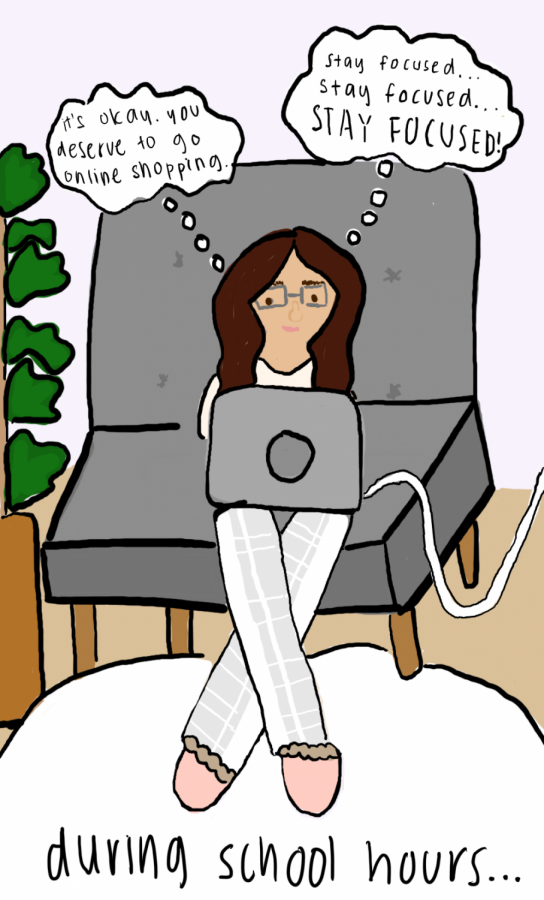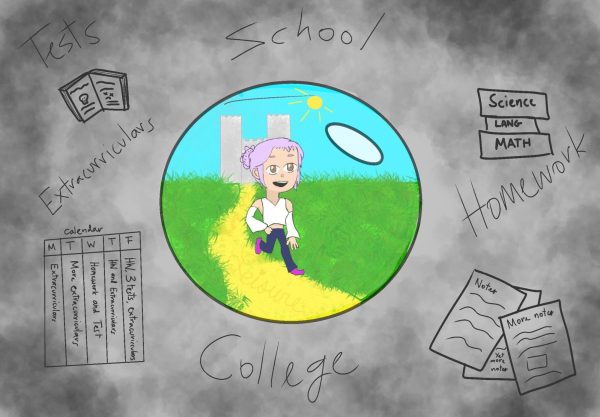No books, only digitized work
Remote learning poses problems, lack of normalcy
FUHSD announced on Friday, March 13 that all schools — in accordance with county guidelines — would close for three weeks to reduce the risk of staff and students contracting the novel COVID-19. The county’s health directive has since extended the closure to May 1, according to NBC Bay Area. Students will be learning remotely with the help of online school methods to abide by California Gov. Gavin Newsom’s order to stay at home and practice social distancing.

As a result of the COVID-19 pandemic, students and staff have turned to remote learning methods.
The extension was eventually extended throughout the end of the year, which means schools will remain closed until the next school year, and remote learning methods will be utilized during this time.
Like most, I was initially happy at the prospect of learning in the comfort of my home. I didn’t need to come to school for months and could work remotely from my brand-new, cozy couch. Furthermore, my introverted self was elated at the fact that I would not be obligated to talk to people at school.
However, after hearing my friends lament about the situation, I realized that the idea of not being able to study with teachers and other students was not as appealing as it initially seemed.
During the first week of quarantine, I found myself lagging behind in my coursework as there was no authoritative figure keeping me on track. I also noticed I was procrastinating, whereas in school, I am a productive person. Meanwhile, at home, I was lazy and lethargic and would get distracted easily.
If I were in a physical brick-and-stone school, this would not have been the case.
In an interview with the New York Times, English teacher Hope Molina-Porter mentions that despite teaching advanced students, the quality of their writing has declined as a result of learning with technology and spending lots of time on screens.
Given the current pandemic, the most logical method to educate a majority of students would be online school, where instructors can upload and grade homework assignments on sites such as Google Classroom, Schoolloop and Schoology.
However, with the internet, we can only do so much. In order to learn properly, schools must incorporate the use of physical books in addition to technology.
Personally, I find that by flipping through the pages of a textbook, I retain knowledge better than when I scroll through websites in a futile attempt to gain information.
According to Scientific American, reading lengthy texts online drains our mental resources and makes it harder to retain information in comparison to shorter texts in the pages of a book.
To lessen the amount of time spent staring at their screens, students can engage in other offline methods such as taking breaks in between assignments.
Such activities could be as simple as taking notes in a notebook, as it is both therapeutic and is another way to better understand the presented subject matter.
In addition, according to Seattle Post-Intelligencer, a 2011 study conducted by Columbia University shows that 92 percent of community college students attending classes at traditional community colleges in Washington state graduated, whereas only 82 percent of students attending online classes did the same.
Furthermore, various other problems arise in terms of online schooling methods. Students do not have peers and teachers to readily talk to in self-isolation, and students with poorer attention spans may slack off.
Though I may have initially despised the idea of attending school, I now long for a sense of normalcy, as online school is proving to be more problematic than helpful. However, in these times we must learn to adapt. Using physical textbooks instead of relying solely on online resources is one way in which we can regain some normalcy.















